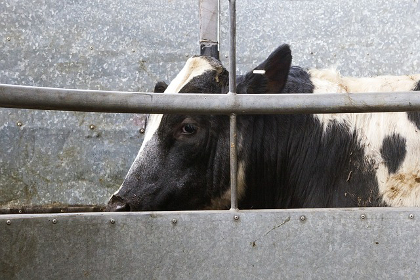
Will Allen & Michael Colby: Industrial Dairy Cow Blues
It’s no secret that the conventional dairy industry is in a deep, downward spiral, decades in the making. This is largely the result of a commodity-based pricing scheme that was designed to do exactly what it’s doing: keep prices paid to farmers low and focus on quantity over quality.
December 21, 2016 | Source: VT Digger | by Will Allen
Editor’s note: This commentary is by Will Allen and Michael Colby, who are co-founders, along with Kate Duesterberg, of Regeneration Vermont, a new nonprofit educational and advocacy organization that is working to halt the catastrophic consequences of Vermont’s adoption of degenerative, toxic and climate-threatening agricultural techniques.
It’s no secret that the conventional dairy industry is in a deep, downward spiral, decades in the making. This is largely the result of a commodity-based pricing scheme that was designed to do exactly what it’s doing: keep prices paid to farmers low and focus on quantity over quality. The negative impacts have been widely documented, everything from farmer attrition to ecological devastation. But, when the story of industrial dairying is told, rarely are the cows given much more than a mention. And it’s probably for the better, because the story of the industrial dairy cow isn’t pretty.
It all begins with dairy farm economics. The more milk produced, the bigger the glut and the lower the prices. But the lower the prices, the more milk the farmer needs to produce to try and make money. And around and around it goes, with the dairy cow taking the brunt of the push to produce more and more milk. They are, after all, doing the producing.
Currently, the price of milk at the farm is so low and so devalued that it costs the farmer more to produce it than they can sell it for. Increasingly, it’s not even worth the cost of shipping it. This year more than 40 million pounds of milk were dumped by October, shattering last year’s record dump in just nine months.
